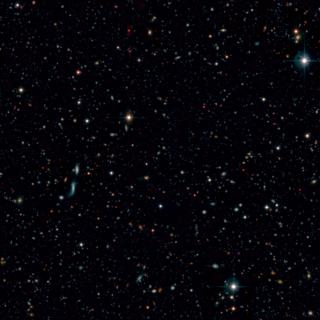Bibcode
Ramón-Pérez, Marina; Bongiovanni, Ángel; Pérez García, Ana María; Cepa, Jordi; Lara-López, Maritza A.; de Diego, José A.; Alfaro, Emilio; Castañeda, Héctor O.; Cerviño, Miguel; Fernández-Lorenzo, Mirian; Gallego, Jesús; González, J. Jesús; González-Serrano, J. Ignacio; Nadolny, Jakub; Oteo Gómez, Iván; Pérez Martínez, Ricardo; Pintos-Castro, Irene; Pović, Mirjana; Sánchez-Portal, Miguel
Referencia bibliográfica
Astronomy and Astrophysics
Fecha de publicación:
11
2019
Revista
Número de citas
9
Número de citas referidas
9
Descripción
Aims: We take advantage of the capability of the OTELO survey to obtain the Hα luminosity function (LF) at z ̃ 0.40. Because of the deepest coverage of OTELO, we are able to determine the faint end of the LF, and thus better constrain the star formation rate and the number of galaxies at low luminosities. The AGN contribution to this LF is estimated as well.
Methods: We make use of the multiwavelength catalogue of objects in the field compiled by the OTELO survey, which is unique in terms of minimum flux and equivalent width. We also take advantage of the pseudo-spectra built for each source, which allow the identification of emission lines and the discrimination of different types of objects.
Results: The Hα luminosity function at z ̃ 0.40 is obtained, which extends the current faint end by almost 1 dex, reaching minimal luminosities of log10Llim = 38.5 erg s-1 (or ̃0.002 M☉ yr-1). The AGN contribution to the total Hα luminosity is estimated. We find that no AGN should be expected below a luminosity of log10L = 38.6 erg s-1. From the sample of non-AGN (presumably, pure SFG) at z ̃ 0.40 we estimated a star formation rate density of ρSFR = 0.012 ± 0.005 M☉ yr-1 Mpc-3.
Proyectos relacionados

Evolución de Galaxias
El estudio de la evolución de las galaxias es un tema crucial de la Astronomía Extragaláctica moderna. Permite vincular las galaxias locales con las primeras que existieron en el universo. Pero para poder abordarlo es preciso obtener censos estadísticamente significativos de galaxias de distintas luminosidades, a distintas distancias
Jorge
Cepa Nogue